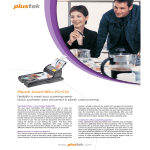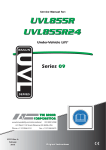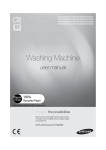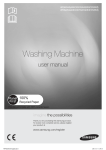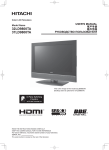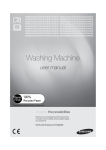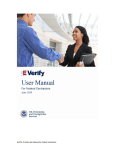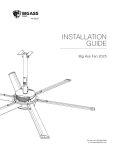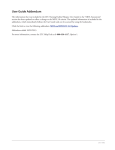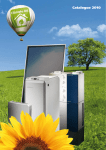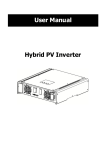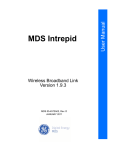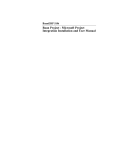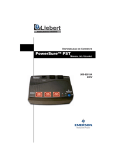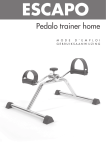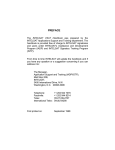Download Aerial Platform and Scissor Lift Policy
Transcript
Aerial Platform and Scissor Lift Policy Contents I. Introduction ............................................................................................................................. 3 II. Scope ....................................................................................................................................... 3 III. Responsibilities ................................................................................................................... 3 IV. Training Program ................................................................................................................ 9 V. Inspections ............................................................................................................................ 11 VI. Maintenance ...................................................................................................................... 13 VII. Standard Procedures.......................................................................................................... 13 VIII. Platform Qualifications ..................................................................................................... 14 IX. Markings and Decals......................................................................................................... 15 X. XI. The use of forklifts as aerial platform lifts............................................................................ 15 Records Retention ............................................................................................................. 15 Appendix A - Specific Lift Familiarity Training Certification Form ....................................17 Appendix B - Aerial Platform & Scissor Lift Pre-6WDUW8S,QVSHFWLRQ)RUP«««« ....18 Appendix C - $HULDO3ODWIRUP6FLVVRU/LIW:RUNSODFH,QVSHFWLRQ)RUP««««« ...19 Appendix D - 2SHUDWLQJ0DQXDO$FNQRZOHGJHPHQW)RUP«««««««««««« .20 Aerial Platform & Scissor Lift Policy - University of Notre Dame May, 2011 2 I. I ntroduction Aerial platform and scissor lifts are present throughout the Notre Dame campus and are used and operated by a number of University staff members. The University recognizes that there are potential hazards associated with the use of these aerial platform lifts. This policy is based on the ANSI/SIA A92.2 through A92.6 Standards (2001 through 2006) and is designed to ensure that these lifts are operated in a consistent and safe manner through a system of safety checks and accountability. II. Scope This policy applies to all University owned or rented aerial platform and scissor lifts designed to elevate personnel on a platform that is propelled by a powered lifting device, with the controls located on the platform itself. It applies to the departments who own or rent the equipment and the employees who use them. Parts of this policy address the use of forklifts that have been approved for the use of elevating personnel. Examples of aerial platform lifts include vehicle (or trailer) mounted aerial lift/bucket trucks, vertical personnel lifts, scissor lifts, articulating boom aerial lifts, cherry pickers, and extendable/telescoping aerial lifts. III. Responsibilities $V VDIHW\ LV HYHU\RQH¶V obligation, the responsibilities outlined below are not recommendations; rather these are mandatory requirements per this policy. (a) (b) DirectorV¶([HFXWLYHV¶DQG%XGJHW$GPLQLVWUDWRU¶V5HVSRQVLELOLWLHV x Ensure that responsibilities of this program are assigned to individuals within their unit/department. x Actively support the implementation and follow-through of this program within their unit/department. x Ensure that adequate funding is available to support this program. 5LVN0DQDJHPHQWDQG6DIHW\'HSDUWPHQW¶V5HVSRQVLELOLWLHV x Develop an aerial platform and scissor lift policy and revise it when necessary. x Ensure that initial training is provided to all lift operators and users that have been entered into the Aerial Platform and Scissor Lift program through the cooperation from the departments who have operators, as well as periodic audits of the lifts in use on campus. x Maintain training records and issue certifications to approved operators and users of aerial platform and scissor lifts, and conduct periodic audits of operator training records. x Approve trainers that carry out the specific lift familiarization training. (c) x Provide technical support to departments and employees when questions or concerns arise with regard to aerial platform and scissor lift safety. x Maintain a database and tracking system for all aerial platform and scissor lifts and operators through the cooperation of the University departments. x Maintain maintenance records for lifts, ensure that appropriate maintenance and inspections are timely implemented on the lifts, and conduct periodic audits to ensure that the annual, frequent, and pre-start inspections are being completed appropriately. x Ensure that a contract agreement is in place with a qualified contractor to conduct the annual inspections, frequent inspections, and maintenance programs and that the inspections take place on the appropriate scheduled basis. x Serve as an approval authority for any lift rentals or lift purchases on campus to ensure that the procedures outlined in this policy are implemented. With the purchase or rental of a lift, Risk Management shall ensure that within sixty (60) days of the acquisition, the manufacturer is provided the full name and address of the buyer along with the model and serial number of the lift acquired. x Serve as the point of contact if any department experiences any problems with a lift, and coordinate the needed service on that lift. Departmental M anagers/Supervisors: x Upon the purchase of an aerial platform or scissor lift: 1) Contact Risk Management & Safety prior to the purchase so that tracking information can be updated and instructions can be communicated. 2) Ensure that the operating and maintenance manuals have been received, made available to each operator, placed in a weather-proof compartment on the lift, and that the ³2SHUDWLQJ 0DQXDO $FNQRZOHGJHPHQW )RUP´ IRXQG LQ Appendix D of this policy has been completed by each operator who uses the lift(s). A copy of this completed form shall be sent to Risk Management & Safety. 3) Acquire the repair and parts manuals within 60 days of the acquisition of a new lift. 4) If buying used equipment, work with Risk Management to provide the manufacturer of the lift with the name and address of the university department along with the model and serial number of the lift. Aerial Platform & Scissor Lift Policy - University of Notre Dame May, 2011 4 x 5) If buying used equipment, work with Risk Management to ensure that an annual inspection is done on the lift prior to placing the unit in service. 6) Place a copy of the operating manual and maintenance manuals in a weather-resistant storage pouch or compartment on the lift. 7) Arrange for the Risk Management Department to provide aerial lift training to all operators prior to the initial use of the lift. 8) Work with Risk Management to arrange for the manufacturer or approved vendor to provide initial ³6SHFLILF/LIW)DPLOLDUL]DWLRQ7UDLQLQJ´WRWKHGHSDUWPHQW¶V operators prior to use of the lift. 9) Ensure that all employee operators of the lift review the RSHUDWRU¶VPDQXDODQGVLJQWKHDFNQRZOHGJPHQWIRUPSULRU to initial use of the lift, and receive a certification card from Risk Management. 10) Appoint an individual within the Department as a designated Safety Contact who will be the point of contact with the Risk Management Department and employees concerning lift safety. 11) Require all operators to show their training certification card prior to being permitted to use the lift. Ensure the inspection and repair of the lift: 1) The Department shall work collaboratively with Risk Management to ensure that workplace periodic inspections, pre-start inspections, and annual inspections are being SHUIRUPHGRQWKHOLIWLQDFFRUGDQFHZLWKWKHPDQXIDFWXUHU¶V recommendations and the university policy. (see Section V. of this policy). 2) The Department who owns the lift shall work with Risk Management to create a pre-start inspection form, based on WKHPDQXIDFWXUHU¶VUHFRPPHQGDWLRQVIRXQGLQWKHRSHUDWLQJ manual that is consistent with the one found in Appendix B, including a space where the operator signs and dates it. In addition, if the lift is to be moved, the Department shall create a workplace inspection form that is consistent with the one found in Exhibit C, including a space where the operator signs and dates the form. 3) When renting a lift with Risk Management approval, departments shall require that the rental agency provide a Aerial Platform & Scissor Lift Policy - University of Notre Dame May, 2011 5 pre-start inspection form for the specific lift that they will be renting. 4) x When safety-related concerns have been discovered through the annual inspections, frequent inspections or prestart inspections, or at any other time, the lift shall be locked out of service until the item(s) has been repaired and Risk Management should be immediately notified. Ensure that all operators and users of the lift are trained and observe safe practices: 1) The Department is responsible for arranging the safety training of all new authorized users of the lifts by contacting Risk Management & Safety. 2) The Department must ensure that operators receive ³VSHFLILF OLIW IDPLOLDUL]DWLRQ WUDLQLQJ´ IURP FRPSHWHQW operators/trainers (authorized by Risk Management and Safety), or the manufacturer or vendor, or an approved contracted trainer. Departments must document this training (see Appendix A) and provide the original documents to Risk Management & Safety. 3) When renting a lift, departments shall require that the rental agency provide specific lift familiarization training for the particular lift that they are renting prior to lift use. The form in Appendix A shall be signed by each trainee and the trainer for proper documentation and the original signed copies shall be sent to Risk Management & Safety. 4) The Department must ensure that all operators review the operating manuals and complete the ³2SHUDWLQJ 0DQXDO $FNQRZOHGJHPHQW )RUP´ VHH Appendix D) for each lift they will operate prior to using the lift. 5) The Department must ensure that no personnel operate an aerial platform lift if they have not been trained in both the classroom aerial platform and scissor lift safety training and the specific lift familiarization training on the lift that they will operate (see section IV of this policy). The operators must have a certification card from Risk Management that authorizes them to operate the specific lift. 6) The Department must ensure that no personnel ride on an aerial platform lift if they have not been trained in the classroom aerial platform & scissor lift safety training FODVV,IDVWDIIPHPEHU¶VFHUWLILFDWLRQFDUGGRHVQRWVSHFLI\ that they have approval to operate a specific lift, they may ride on that lift with an approved operator for that lift (assuming the lift is approved to carry more than one person) but they may not operate that lift. Aerial Platform & Scissor Lift Policy - University of Notre Dame May, 2011 6 x 7) When lifts are used outdoors, the Department/Safety Contact (?) must ensure that weather conditions are continuously monitored through a real time weather service source throughout the use of the lift and that an DQHPRPHWHUZLQGYHORFLW\PHWHULV DWWDFKHGRQWKHOLIW¶V personnel platform, is operational, and is visible to the operator. Contact Risk Management & Safety to locate an anemometer. Vertical aerial platform and scissor lifts may not be used when wind speeds reach 28 mph or more, or when there is a weather warning in effect for winds in excess of 28 mph. 8) The Department must provide flexibility for the users of the lifts by giving them the discretion of lowering the lift at any time, if they have concerns for their safety. It shall be the RSHUDWRUV¶ GLVFUHWLRQ WR WHUPLQDWH WKHLU ZRUN DFWLYLWLHV while using an aerial platform or scissor lift. If selling, donating, or destroying lifts: Prior to the donation, sale, or destruction of an aerial platform or scissor lift, the donating or selling department shall contact Risk Management & Safety to ensure that appropriate steps are taken. x Records Retention (See section XI for additional information): Each department shall date, sign, and retain the following records for each aerial platform or scissor lift they own: 1) Serial number and date of purchase (this shall be kept for as long as the department owns the lift). 2) Written records of the annual inspections, frequent inspections, and repairs performed. This shall include deficiencies found, corrective actions taken and the identification of the person(s) who performed the inspection and repairs. Copies shall be provided to Risk Management. 3) All pre-start and workplace inspections that have been performed for each lift used. Copies shall be provided to Risk Management on a monthly basis. 4) Training records for employees who have received the specific lift familiarization training for each lift that they use. Copies shall be provided to Risk Management. 5) Operating manual acknowledgement form for each operator, for each lift they use. Copies shall be provided to Risk Management. Aerial Platform & Scissor Lift Policy - University of Notre Dame May, 2011 7 (d) Employee/Operator Responsibilities Because the operator has direct control over the application and operation of aerial platform or scissor lifts, conformance with good safety practices is the obligation of the operator of the lift. Decisions on the use and operation of the lift shall be made with the understanding that the platform will be carrying personnel whose safety is dependent on those decisions. Operators of aerial platform and scissor lifts have responsibilities involving the following: x Operators of aerial platform and scissor lifts must review the RSHUDWRU¶V PDQXDO IRU DOO OLIWV WKDWWKH\ XVH SULRU WR WKH LQLWLDO OLIW use. Documentation of this shall be completed using the ³2SHUDWLQJ0DQXDO$FNQRZOHGJHPHQW)RUP´IRXQGLQDSSHQGL[' of this policy. x Through the classroom aerial platform lift safety training, the specific lift familiarization training, and review of the RSHUDWRU¶V manual, the operator is expected to know and understand the following about the lifts that they operate, prior to their initial operation of the lift: 1) The safe operation of the lift. 2) Hazardous conditions which jeopardize safety. 3) All control features of the lift. 4) All placard warnings. 5) All safety devices on the lift. 6) Where to locate the user manual. 7) Who is permitted to operate or ride on the lift. If the operator does not understand any of the above they shall consult with their supervisor, their Designated Safety Contact, or Risk Management prior to using the lift to ensure a full understanding. x Perform Pre-Start Inspections: Operators shall inspect the aerial platform or scissor lift as required by their department and this policy to ensure proper operation. All operators shall perform pre-start inspections (see Section V of this SROLF\ RQ WKH OLIW SULRU WR HDFK GD\¶V RU VKLIW¶V XVH RI WKH OLIW Documentation of the pre-start inspections shall be performed by FRPSOHWLQJ DQ ³$HULDO 3ODWIRrm Lift Pre-6WDUW ,QVSHFWLRQ )RUP´ (see Appendix B for an example of a pre-start inspection form). Aerial platform lifts that are not in proper operating condition shall Aerial Platform & Scissor Lift Policy - University of Notre Dame May, 2011 8 be immediately removed from service and reported to the appropriate departmental supervisor. x Perform Workplace Inspections: Prior to setting up the lift at each new location, the operator shall conduct a workplace inspection to identify potential workplace hazards (see Section V and Appendix C of this policy). Never elevate a vertical aerial platform or scissor lift when wind speeds may exceed 28 mph, or when lightning is observed. Weather conditions shall be continuously monitored through a real-time weather service source and an anemometer (wind velocity meter) shall be present on all vertical aerial platform and scissor lifts through the duration of the use of the lift outdoors. For vehicle-mounted aerial platform lifts, see the operating manual for wind speed guidelines. I V. x Operators shall notify their supervisor if the lift does not safely pass inspection or if any unsafe condition is identified. x If, at any time, the operators are concerned for their safety, they may, at their discretion, lower the lift and stop their work activities. x Only trained employees may operate or use aerial platform lifts VHH³7UDLQLQJ3URJUDP´LQ6HFWLRQ,9RIWKLVSROLF\ Training Program To become authorized to operate an aerial platform or scissor lift, employees must successfully complete an initial two-part training program: a classroom session and a specific lift familiarization session. Training certification cards will be issued to all users who complete these requirements. Each certificate will indicate the specific aerial platform or scissor lift(s) the training participant is approved to operate based on the make and model. Employees are not permitted to operate lifts for which they have not EHHQDSSURYHGOLIWVWKDWWKH\GLGQRW UHFHLYH³VSHFLILFOLIW´IDPLOLDUL]DWLRQWUDLQLQJRQ However, if they have received the classroom safety training, they are permitted to be passengers on lifts operated by employees who are authorized to operate that lift, assuming that the lift is rated to carry more than one person. Employees who have no need to operate an aerial platform lift but do have a need to ride on a lift with an authorized operator may attend the classroom training session only and will be issued a FHUWLILFDWHWKDWDOORZVWKHPWREHD³SDVVHQJHURQO\´ (a) Classroom safety training: All operators and users of aerial platform lifts shall attend an aerial platform and scissor lift safety training class sponsored by Risk Management & Safety prior to using, being a passenger on, or operating a lift. The contents of the training will include the following: x Purpose and use of manuals and where they must be located. x Pre-start inspection process. Aerial Platform & Scissor Lift Policy - University of Notre Dame May, 2011 9 (b) x Identification of malfunctions and problems. x Factors affecting stability. x Purpose of placards and decals. x Workplace inspections. x Safety rules and regulations. x Authorization to operate. x Operator warnings and instructions. x The application of fall arrest systems for aerial platform and scissor lifts. x The use of wind monitoring equipment, including the lift anemometer for outside lift use, and reinforcement of the RSHUDWRU¶V DXWKRULW\ WR Fome down from the lift if they have any safety concerns. Specific Lift Familiarization Training: $OO RSHUDWRUV RI DHULDO SODWIRUP DQG VFLVVRU OLIWV VKDOO DWWHQG D ³6SHFLILF /LIW )DPLOLDUL]DWLRQ 7UDLQLQJ´ VHVVLRQ WKDW LV VSHFLILF WR WKH PDNH DQG model of lift that they will be operating. The selection of the trainer shall be approved by Risk Management & Safety. The trainer may be an experienced and competent operator, a representative of the lift manufacturer, a representative of the lift distributor, or a contracted WUDLQLQJ SURYLGHU 7KH WUDLQHU DQG WUDLQHH VKDOO VLJQ WKH ³81' $HULDO Platform or Scissor Lift Certification Form/Specific Lift Familiarization 7UDLQLQJ´VHH$SSHQGL[$IRUDIRUP Successful completion of both the classroom and Specific Lift Familiarization portions of the training will authorize an employee to use the aerial platform or scissor lift. At this time, Risk Management & Safety will issue a certification card to the authorized user of the lift. Re-training (both the classroom and specific lift familiarization sessions) will be required of any operator that has been involved in an aerial platform or scissor lift incident or when someone has observed them performing unsafe practices involving the lift. Aerial Platform & Scissor Lift Policy - University of Notre Dame May, 2011 10 V. I nspections The inspection process is a critical step in preventing aerial platform and scissor lift accidents that are caused from faulty or worn out equipment. Aerial platform and scissor lifts that are not in proper operating condition shall be removed from service until the problems have been corrected by an authorized and trained maintenance technician. (a) Pre-Start I nspections %HIRUH HDFK GD\¶V XVH RU DW WKH EHJLQQLQJ RI HDFK VKLIW WKDW WKH DHULDO platform lift is used (whichever comes first), it shall be given a pre-start inspection. This involves a visual inspection and functional test that includes the following criteria: x Operating and emergency controls. x Safety devices. x Personal protective devices. x Air, hydraulic and fuel system leaks. x Cables and wiring harness. x Loose or missing parts. x Tires and wheels. x Placards, warnings, control markings and operating manual(s). x Outriggers, stabilizers and other structures. x Guardrail system. x Other items specified by manufacturer. x If outdoors, a functioning anemometer is attached to the platform. Because each make and model is unique, the inspection criteria may vary. 3OHDVHUHIHUWRWKHRSHUDWRU¶VPDQXDOIRUWKHVSHFLILFFULWHULDUHTXLUHGIRU HDFK SDUWLFXODU OLIW WKDW QHHGV WR EH LQVSHFWHG ,I WKH RSHUDWRU¶V PDQXDO does not have a form that can be dated and signed, the Department who owns or rents the lift shall work with Risk Management to create a form EDVHG RQ WKH RSHUDWRU¶V PDQXDO VSHFLILFDWLRQV 7KH IRUP VKDOO LQFOXGH D space for the operator to sign and date it. An example can be found in Appendix B. Each department shall identify a storage location for the completed pre-start inspection forms. However, at a minimum, the last completed inspection shall be stored in a compartment, container, or pouch on the lift. Aerial Platform & Scissor Lift Policy - University of Notre Dame May, 2011 11 (b) Workplace I nspections Before an aerial platform lift is used, the operator shall visually check the workplace area where the aerial platform or scissor lift is to be used, identifying potential hazards such as, but not limited to: x Drop-offs or holes. x Slopes. x Bumps and floor obstructions. x Debris. x Overhead obstructions and high voltage conductors. x Hazardous locations and atmospheres. x Inadequate surface and support to withstand all load forces imposed by the aerial platform lift. x Wind and weather conditions. Wind speeds do not reach 28 mph and forecast is being monitored No lightening is visible and there are no active thunderstorm warnings No other weather related concerns are in the forecast Operation of aerial platform lifts is prohibited when wind speeds reach 28 mph or more, when there is a wind warning in effect of 28 mph or more, when lightening is visible, or when thunder storm warnings are in effect. x Presence of unauthorized people. x Other possible unsafe conditions. Depending on the nature of the workplace and the type of work being performed, additional items may be added to this list of criteria. Each department shall work with Risk Management to create a workplace inspection form that, at a minimum, contains the criteria listed above, and shall contain a space IRU WKH RSHUDWRU¶V VLJQDWXUH DQG GDWH )RU WKHLU convenience, departments may choose to create a two-sided inspection form, with the pre-start inspection form on one side and the workplace inspection form on the other side. An example of a Workplace Inspection form can be found in Appendix C. Aerial Platform & Scissor Lift Policy - University of Notre Dame May, 2011 12 (c) Annual I nspections An annual inspection shall be performed on all aerial platform and scissor lifts every twelve months (no later than 13 months from the date of the prior annual inspection). The inspection shall be performed by a qualified mechanic who is authorized to perform maintenance duties on the lift. An approved vendor shall be contracted through Risk Management & Safety with the cooperation of the Department who owns the lift. The FRQWUDFWRU¶V LQVSHFWLRQ VKDOO LQFOXGH DOO LWHPV VSHFLILHG E\ WKH manufacturer for an annual inspection. (d) Frequent I nspections A frequent inspection (also referred to as a periodic inspection) shall be performed on all aerial platform and scissor lifts the earlier of a quarterly basis (or in service use for 150 hours), or more often if recommended by the manufacturer of the lift. A frequent inspection should also be completed if the lift has been out of service for more than 3 months. The inspection shall be performed by a qualified mechanic who is authorized to perform maintenance duties on the lift. An approved vendor shall be contracted through Risk Management & Safety, with the cooperation of the Department who owns the lift. 7KH FRQWUDFWRU¶V LQVSHFWLRQ VKDOO include all items specified by the manufacturer for a frequent inspection. VI . M aintenance All maintenance that is performed on aerial platform and scissor lifts shall be performed by trained and experienced professionals. The owning or renting Department shall make arrangements with an approved vendor/contractor with the input of Risk Management and Safety. Battery charging and fueling aerial platform or scissor lifts shall be done in an intrinsically safe environment with adequate ventilation. Where battery charging takes place, a 10 lb. ABC fire extinguisher shall be available within 20 feet of the charging station. Where propane cylinder change-outs are needed, tank storage shall take place in an approved location, such as a garage or exterior storage space. While changing out tanks, employees shall wear safety goggles or a face shield, and burn-resistant gloves (insulated leather or cryogenic gloves). VI I . Standard Procedures To ensure safe practices, the following general procedure shall be used when an authorized employee operates an aerial platform lift: 1) Obtain authorization to use or operate the lift (certification card). 2) Check the last pre-start inspection for any comments or notes and perform a new pre-start inspection on the lift. Document the inspection, and place it in the reserved storage location on the lift. Aerial Platform & Scissor Lift Policy - University of Notre Dame May, 2011 13 3) Perform a workplace inspection in the area that the lift will be used. 4) Extend and adjust the outriggers, stabilizers, extendible axles, or other stability enhancing means. If the set up location does not have enough space to do this, the operator shall refer to the operator¶V PDQXDO WR HQVXUH WKDW WKH height, weight, or wind conditions are within the limits of the lift while the stabilizing equipment is not being used. Contact Risk Management and Safety with any questions. 5) Ensure that the guardrails are installed and are in place and that the load being placed on the lift is within the rated capacity of the lift. 6) Ensure that wind conditions or other horizontal forces are ZLWKLQDFFHSWDEOHOLPLWVSHUWKHRSHUDWRU¶VPDQXDODQGWKLV policy. 7) Ensure that all personnel on the lift have been trained and authorized to operate or ride on the platform. VI I I . Platform Qualifications (a) Specifications for platforms The following criteria shall be met for all approved platforms: (b) x Platform width shall be not less than 18 inches and shall have a slip resistant surface. x The platform shall have a guardrail system around its periphery. It is removable or can be lowered. The means used to secure it in the normal operating position shall be readily accessible for inspection and maintenance. x The guardrail system shall include a top rail that is between 39 and 45 inches high, a mid-rail that is approximately half-way from the platform to the top-rail, and a toe board that is at least 4 inches high. When to use personal fall protection. When operating articulating boom lifts that are equipped with lanyard tieoff points, the use of fall protection equipment is required. If special circumstances exist that encourage the operator to use fall protection on vertical aerial platform or scissor lifts, they must tie off to a proper anchor point that is not attached to or part of the aerial platform lift itself and doing so must be approved by the Risk Management and Safety Department. Vertical aerial platform and scissor lifts, by their nature, do not constitute an approved anchor point for tie-off. Aerial Platform & Scissor Lift Policy - University of Notre Dame May, 2011 14 I X. M arkings and Decals In addition to any other markings or decals that are placed on the lift by the manufacturer, the following information shall be displayed on all aerial platform lifts in a clearly visible, accessible area and in a durable manner: X. 1) 7KHPDNHPRGHOVHULDOQXPEHUDQGPDQXIDFWXUHU¶VQDPH and address. 2) The rated workload, including rated number of occupants. 3) The maximum platform height. The use of forklifts as aerial platform lifts Forklifts are not aerial platform lifts. However, some tasks may encourage the use of forklifts to elevate personnel. This is not approved unless the following criteria are met: XI . 1) The forklift is equipped with a bucket, basket, or platform attachment that meets the ANSI and OSHA standards for elevated workplaces. 2) The manufacturer of the forklift has approved, in writing, of the attachment for WKH SXUSRVHV LW ZLOO EH XVHG ³LQ ZULWLQJ´ PD\ LQFOXGH VWDWHPHQWV WKDW DSSURYH WKH attachment for the specific make & model of the forklift in WKHPDQXIDFWXUHU¶VSDUWVFDWDORJ 3) The users of the forklift have successfully completed both the Notre Dame forklift safety training and the Notre Dame aerial platform and scissor lift safety training programs. Records Retention Maintenance, inspection and training records shall be maintained for equipment and its operators. Training records shall be maintained by Risk Management and Safety for a period of five years. The following records shall be maintained by each department who owns an aerial platform lift: 1) Workplace inspection documents shall be maintained for a period of four years. 2) Pre-start inspection documents shall be maintained for a period of four years. Aerial Platform & Scissor Lift Policy - University of Notre Dame May, 2011 15 3) Annual inspection documentation shall be maintained for the entire ownership of the lift. 4) All maintenance performed on the lift shall be maintained for the entire ownership of the lift. 5) Where applicable, signed University of Notre Dame Hydraulic Lift Use Waiver and Indemnification Agreement forms shall be maintained for a period of four years. 6) $OO RSHUDWRUV¶ PDQXDO DFNQRZOHGJHPHQW IRUPV VKDOO EH maintained for the entire ownership of the lift. 7) All training records shall be maintained for ten years. Aerial Platform & Scissor Lift Policy - University of Notre Dame May, 2011 16 Appendix A UND Aerial Platform or Scissor Lift Certification Form Specific Lift Familiarization Training This form documents the OSHA-Required Aerial Platform or Scissor Lift training that is performed by an approved, competent person. Risk Management & Safety must approve the trainer which is based on his/her experience with the particular lift or his/her safety training H[SHULHQFH 7KH WUDLQLQJ PD\ DOVR EH SHUIRUPHG E\ WKH OLIW PDQXIDFWXUHU¶V RU YHQGRU¶V appointed representative or through video that is provided by the manufacturer, specific to the particular lift. Each operator must be trained on each aerial platform or scissor lift that he/she operates. The Specific Lift Familiarization Training shall consist of a review of the following items: a. All safety placards and warnings b. All switches, drive mechanisms, adjustments, and controls (both lower and upper controls) c. The functional operation of the lift d. The use of the outriggers or stabilizing equipment e. All gauges, horns, and lights f. Proper fueling and/or battery charging procedures g. Inspections and the inspection process Aerial or Scissor Lift: Lift Manufacturer (Brand name) Model Serial # I certify that I have met with the trainee identified below and have reviewed the operations of the specific lift identified above and made myself available to answer any questions he/she may have had with regards to the operation of this lift. 3ULQW7UDLQHU¶V1DPH Signature of Trainer Date I certify that I have met with the trainer identified above and that he/she has reviewed with me the operations of the specific aerial platform or scissor lift identified above. I was given an opportunity to ask questions which, if any, were answered to my satisfaction and that I now have the necessary understanding of operations of this lift. I am also certifying that I have received general training on the safe operation of aerial platform or scissor lifts through the Risk Management & Safety Department which covers responsibilities, policy, inspections, platform stability, precautions, safety considerations, standard operating procedures, and other related VDIHW\ FRQFHSWV , KDYH UHYLHZHG WKH RSHUDWRU¶V PDQXDO IRU WKLV OLIW DQG KDYH EHHQ given the opportunity to ask questions that I may have had. 3ULQWWKH7UDLQHH¶V1DPH Signature of Trainee Date 7UDLQHU¶V'HSDUWPHQWRU&RPSDQ\1DPH Aerial Platform & Scissor Lift Policy - University of Notre Dame May, 2011 17 Appendix B Aerial Platform & Scissor Lift Pre-start I nspection form The pre-VWDUW LQVSHFWLRQ VKDOO EH SHUIRUPHG SULRU WR HDFK GD\¶V RU VKLIW¶V XVH RI WKH DHULDO platform lift by an authorized and trained operator of the lift. Documentation of the inspection shall be maintained by each department, with a copy of the most recent inspection document stored on the lift. Check off the items that have been inspected or mark the N/A box if the item does not apply to the lift being inspected. Place any comments in the space provided below. If there are any of these items that are not satisfactory, place the lift out of service until the item is corrected. Department lift belongs to: Make of lift: Model of lift: Serial #: ,QVSHFWRU¶V1DPH Item Inspected Date of Inspection Okay Not Okay N/A Operating controls Emergency controls Safety devices Personal protective devices Pneumatic system (leaks) Hydraulic system (leaks) Fuel system (leaks) Cables Wiring harness Loose/missing parts (locking pins/bolts« Tires and wheels Placards and Warnings Operational Manual Outriggers/Stabilizers Guardrail system and locking gate Anemometer present (if using outdoors) Other items Comments: ,QVSHFWRU¶V6LJQDWXUH Date Aerial Platform & Scissor Lift Policy - University of Notre Dame May, 2011 18 Appendix C Aerial Platform & Scissor Lift Workplace I nspection Form The workplace inspection shall be performed prior to using the aerial platform lift One inspection may be performed for multiple tasks taking place in a single room/space per day. The workplace inspection must be performed by the individual who will be using the lift. Documentation of the inspection shall be maintained by each department and provided to Risk Management on a monthly basis. Check off the items that have been inspected and abate any safety issues that were identified prior to using the lift. Place any comments in the space provided below. Department lift belongs to 6SDFH¶VQDPHRUURRPQXPEHUZKHUHOLIWZLOOEHXVHG ,QVSHFWRU¶V1DPH Date of Inspection Item observed Completed Drop-RIIVRUKROHV««««««««««««« 6ORSHV«««««««««««««««««« %XPSVDQGIORRUREVWUXFWLRQV««««««««« 'HEULV«««««««««««««««««« Overhead obstructions and high voltage conductors.. +D]DUGRXVORFDWLRQVDQGDWPRVSKHUHV«««««« Inadequate surface and support to withstand all load forces LPSRVHGE\WKHDHULDOSODWIRUPOLIW« Wind and weather conditions if being used outdoors -Wind readings & forecasts indicate <28 mph -No lightening visible or forecasted -No other severe weather forecasted Do not operate lift when winds reach 28 mph or more, when a wind warning is in place of 28 mph winds or more, or when lightning is observed or thunderstorms are in effect. 3UHVHQFHRIXQDXWKRUL]HGSHRSOH«««««««« 2WKHUSRVVLEOHXQVDIHFRQGLWLRQV«««««««« ,QVSHFWRU¶VVLJQDWXUH Date Aerial Platform & Scissor Lift Policy - University of Notre Dame May, 2011 19 Appendix D Operating M anual Acknowledgement Form By signing this document, I am certifying that I have received a copy of the operations manual for the aerial platform lift shown below. Upon training and authorization by my department, I am expected to operate this lift. I understand that it is my responsibility to review and understand the safe operation of this aerial platform or scissor lift based on the training I receive DQGWKHPDQXIDFWXUHU¶VUHFRPPHQGDWLRQV,XQGHUVWDQGWKDWLIDWDQ\WLPH,KDYHDQ\TXHVWLRQV regarding tKH LQIRUPDWLRQ IRXQG LQ WKH XVHU¶V PDQXDO, I can contact Risk Management and Safety, my supervisor, or the manufacturer to obtain answers. Aerial Lift Make Aerial Lift Model Name (print) Department 8VHU2SHUDWRU¶VQDPH (sign) Date Aerial Platform & Scissor Lift Policy - University of Notre Dame May, 2011 20




















